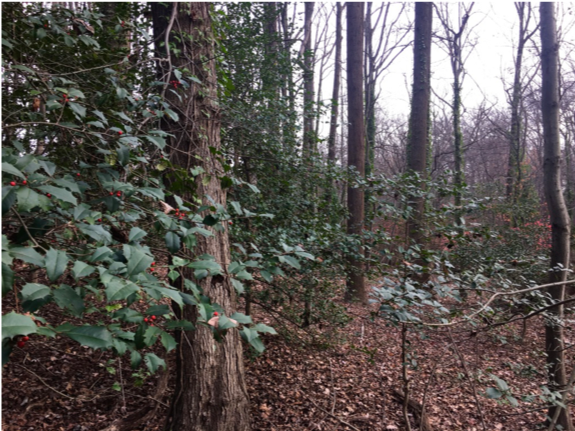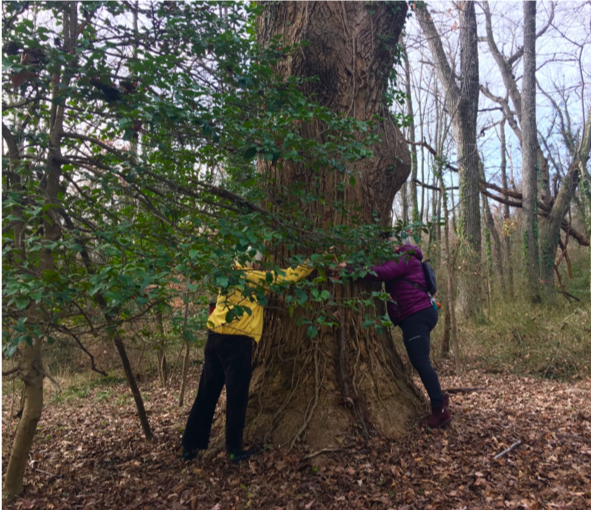By Janet Gingold
December 2020
As if a pandemic with disproportionate impact on Prince George’s County residents, economic hardships, and racial injustice were not enough, 2020 also brought severe flooding to several neighborhoods in our county, especially in the Anacostia Watershed. Torrential rains in September led to flash floods with resultant significant property damage. Natural vegetation along stream valleys helps to slow the flow and store stormwater to prevent downstream flooding. As we face a future with more extreme precipitation events, our “green infrastructure” takes on increased importance.
Prince George’s County planners have long recognized the need to conserve and maintain forests and tree canopy, not only because of the importance of biodiversity and the effect that natural beauty has on enhancing our quality of life and our property values but also because of their contribution to storm water management. The 2005 Countywide Green Infrastructure Plan, the comprehensive Hazard Mitigation Plan, and the Woodland and Wildlife Habitat Conservation Act updated in 2010 all prioritize conservation of natural places, especially along stream valleys.
Prince George’s County has set aside stream valley parks and has promulgated environmental site design principles with small-scale characteristics such as rain gardens, landscape strips and conservation landscaping to better mimic natural hydrologic runoff and minimize the impact of land development (Plan 2035 Prince George’s). However, in Prince George’s County, deforestation proceeds apace, despite priorities established by its planning documents. Our current reforestation requirements for developers are inadequate. Planting saplings off-site just does not replace the ecosystem functions of mature forest removed from development sites. Too often, small but essential parcels of green space are leveled in the name of economic development, putting home-owners at risk of property damage when the rainfall exceeds the capacity of the streams and ever-shrinking area of vegetation and pervious surfaces.
Guilford Woods is about 15 acres of forest along the southern edge of the University of Maryland College Park Campus. Surrounded on all sides by impervious surfaces of Guilford Drive, university infrastructure and housing developments, this island of biodiversity is part of the dwindling green infrastructure that is crucial for making our communities more resilient as our climate changes and extreme precipitation events become more frequent. Within the woods, rivulets draining the surrounding land converge to create the Guilford Run, which then runs along the tree-lined median strip in Guilford Drive, then through man-made channels on its way to the Northeast Branch and the Anacostia River.
The woods includes about 100 trees per acre – about 1500 trees more than 5 inches in diameter at breast height. At least 19 different species of native trees and shrubs have been identified there so far. Maybe you can find some others on your next visit! The trees range in age from new saplings to a tulip tree estimated to be about 150 years old. Even in December while the deciduous trees rest, the hollies of the understory remain green and vibrant, with plentiful berries for the visiting birds. Recent visitors watched a pair of deer bound through the woods, found raccoon tracks along the sandy stream bank, and had a sustained visit with a pileated woodpecker. Visit here to see more about Guilford Woods. If you get a chance to visit the woods in person, take your camera and add your observations to iNaturalist to increase the database about who else lives there.
Despite being identified in the Green Infrastructure Plan as a natural area deserving conservation, Guilford Woods is under threat. Gilbane Development Company and the University of Maryland have partnered to replace much of that forest with townhouses and new graduate student housing.
Doesn’t it make you wonder: Aren’t there other places to build graduate housing without sacrificing this forest? 
Maybe you remember walking through the woods when you were a student in College Park. Maybe you just liked looking at its greenness across the street as you pulled into the Mowatt parking garage. Maybe you are a teacher who needs a living forest within walking distance for your students to study ecosystems in action or a spiritual leader who sends people to the woods to contemplate the glories of Creation. Maybe you live downstream where floods will get worse than they already have been when this patch of green space is gone.
As the Lorax has told us, “Unless someone like you cares a whole awful lot, nothing is going to get better, it’s not.” To find out more about stewardship activities and how you can help care for this lovely bit of mature forest protecting Guilford Run visit Friends of Guilford Woods.
Don’t it always seem to go, that you don’t know what you’ve got till it’s gone…
--Joni Mitchell